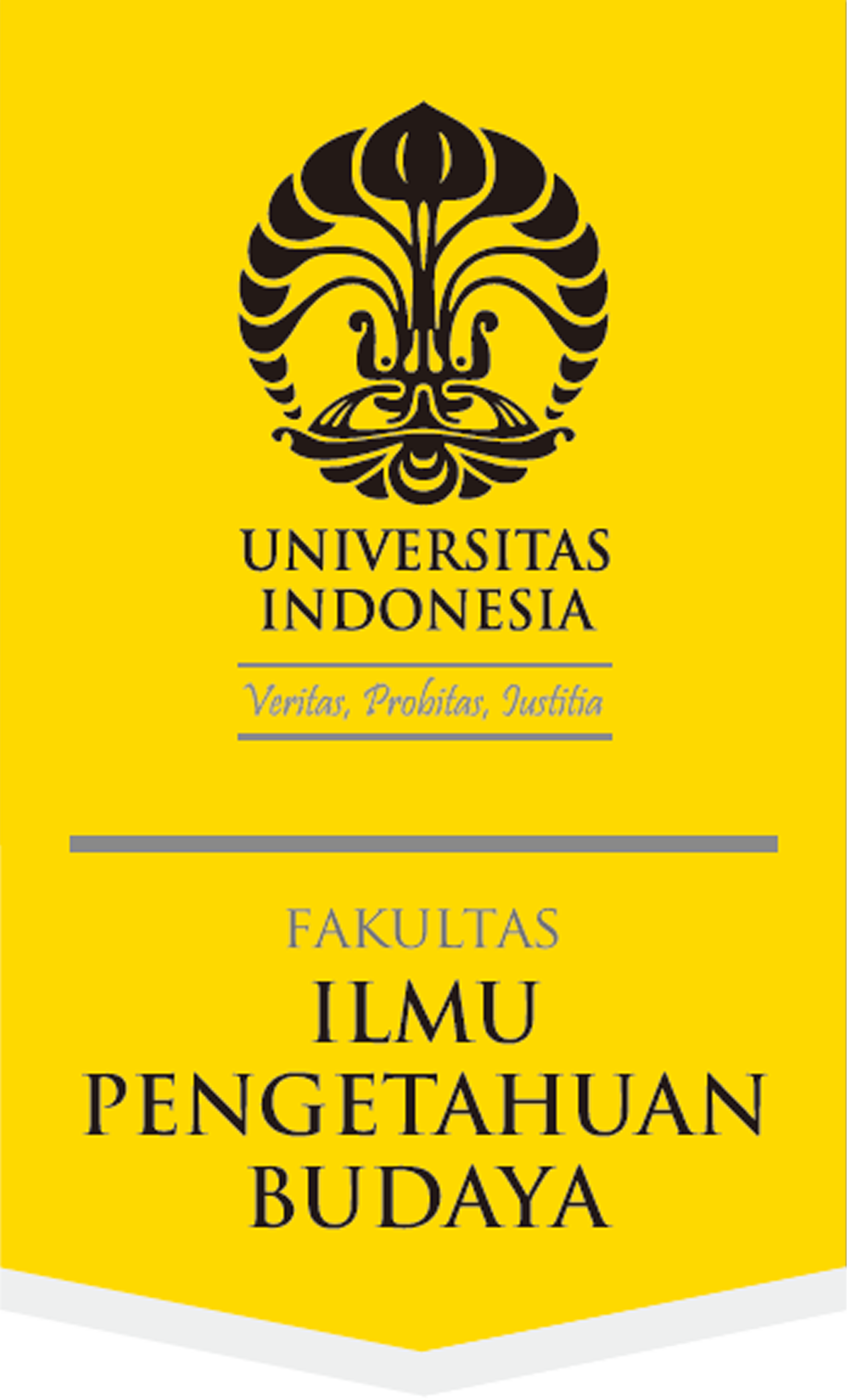Abstract
This paper aims at exploring certain negotiations that justify Muslim's cinematic texts and practices. It focuses on the questions about what is Islamic and un-Islamic about film, who and what decides certain films as Islamic, and what are the meanings of cinematic practices of Islam for Muslim society. Furthermore, this paper tries to investigate these questions from a theoretical basis using concepts of Islamic modernity, Islamic Ummah and Public, in order to shed some light on the idea of how a production of an Islamic film may trigger the creation of a political and religious identity.
References
Anderson, Benedict. 1991. Imagined communities; Reflection on the origin and spread of nationalism. London and New York: Verso.
Appadurai, Arjun. 1996. Modernity at large; Cultural dimensions of globalization. Minneapolis/London: University of Minnesota Press.
Asad, Talal. 2003. Formations of the secular; Christianity, Islam, modernity. California: Stanford University Press.
Barnard, Timothy P. 1997. “Local heroes and national consciousness; The politics of historiography in Riau”, Bijdragen tot de Taal-, Land- en Volkenkunde [Riau in Transition] 153-4: 509-526.
Breuilly, John. 2006. “Introduction”, in: Ernest Gellner, Nations and nationalism, pp. xiii-liii. Oxford: Blackwell.
Çinar, Alev. 2005. Modernity, Islam and secularism in Turkey; Bodies, places and time. Minneapolis: University of Minnesota Press.
Dijk, C. van. 2007. ”Religious authority, politics, and fatwas in contemporary Southeast Asia”, in: R. Michael Feener and Mark E. Cammack, Islamic law in contemporary Indonesia; Ideas and institutions, pp. 44-66. Cambridge: Harvard University Press.
Dwyer, Rachel. 2006. Filming the Gods; Religion and Indian cinema. London and New York: Routledge.
Encyclopaedia of Islam. 1965. Second Edition. Encyclopaedia of Islam. Vol. 2, C-G, [Edited by B. Lewis, Ch. Pellat and J. Schacht. Assisted by J. Burton-Page, C. Dumont and V.L. Ménage.] Leiden: Brill.
Eickelman, Dale F. and Jon W. Anderson (eds.). 1999. New media in the Muslim world; The emerging public sphere. Bloomington and Indianapolis: Indiana University Press.
Eickelman, Dale F. and Armando Salvatore. 2002. “The public sphere and Muslim identities”, European Journal of Sociology 43: 96-115.
Eisenstadt, S.N. 2000. “Multiple modernities”, Daedalus 129: 1-29.
Gaonkar, Dilip Parameshwar. 1999. “On alternative modernities”, Public Culture Vol. 11 No. 1: 1-18.
Gellner, Ernest. 2006. Nations and nationalism. Oxford: Blackwell.
George, Kenneth M. 2010. Picturing Islam; Art and ethics in a Muslim lifeworld. Malden, MA: Willey-Blackwell.
Habermas, Jürgen. 1989. The structural transformation of the public sphere. Cambridge: Polity Press.
Harvey, David. 2004. The condition of post modernity. Malden, MA: Blackwell.
Heeren, Katinka van. 2008. Contemporary Indonesian film; Spirits of reform and ghost from the past. PhD thesis, Leiden University.
Hefner, Robert W. 1997. “Islam in an era of nation-states; Politics and religious renewal in Muslim Southeast Asia”, in: Robert W. Hefner and Patricia Horvatich (eds), Islam in an era of nation-states, pp. 3-42. Honolulu: University of Hawaii Press.
Heider, Karl G. 1991. Indonesian cinema; National culture on screen. Honolulu: University of Hawaii Press.
Heryanto, Ariel. 2011. “Upgraded piety and pleasure; The new middle class and Islam in Indonesian popular culture”, in: Andrew N. Weintraub (ed.), Islam and popular culture in Indonesia and Malaysia, pp. 59-82. London: Routledge.
Hirschkind, Charles. 2001. “Civic virtue and religious reason; An Islamic counterpublic”, Cultural Anthropology 16-1: 3-34.
Hirschkind, Charles. 2006. The Ethical soundscape; Cassette sermons and Islamic counterpublics. New York: Columbia University Press.
Hoesterey, James B. and Mashall Clark. 2012. “Film Islami: gender, piety and pop culture in post-authoritarian Indonesia”, Asian Studies Review Vol. 36: 207-226.
Huda, Ahmad Nuril. 2010. “When ayat-ayat cinta goes to cinema; A moving picture of da’wa, politics and fragmented religious authority”. Master thesis, Leiden University.
Imanda, Tito. 2012. “Independent versus mainstream Islamic cinema in Indonesia; Religion using the market or vice versa?”, in: Tilman Baugmentel (ed.), Southeast Asian independent cinema, pp. 89-104. Singapore: NUS Press.
Kahn, Joel S. 2001. “Anthropology and modernity”, Current Anthropology Vol. 42 No. 5 (December): 651-680.
Kellner, Douglas. 1995. Media culture; Cultural studies, identity and politics between the modern and the postmodern. London: Routledge.
Larkin, Brian. 2008. Signal and noise; Media, infrastructure, and urban culture in Nigeria. Durham and London: Duke University Press.
Liddle, R. William. 1996. “The Islamic turn in Indonesia; A political explanation”, The Journal of Asian Studies Vol. 55 No. 3 (August): 613-634.
Majelis Ulama Indonesia. 1976. Mimbar Ulama. Jakarta: Dewan Pimpinan, Majelis Ulama Indonesia.
Mihardja, Achdiat K. 2009. Atheis. Thirty-third Edition. Jakarta: Balai Pustaka. [First edition 1949.]
Myers, Fred. 2002. Painting culture; The making of an Aboriginal high art. Durham: Duke University Press.
Porter, Donald. 2002. Managing politics and Islam in Indonesia. New York: Routledge Curzon.
Sen, Khrisna and David T. Hill. 2000. Media, culture, and politics in Indonesia. Oxford: Oxford University Press.
Shafik, Viola. 1998. Arab cinema; History and cultural identity. Cairo: The American University in Cairo Press.
Tayob, Abdulkader. 2004. “Reading religion and the religious in modern Islam”. Inaugural Lecture, Radboud University Nijmegen.
Taylor, Charles. 2002. “Modern social imaginaries”, Public Culture Vol. 14 No. 1: 91-124.
Warner, Michael. 2002. “Publics and Counterpublics”, Public Culture Vol. 14 No. 1: 49-90.
Weintraub, Andrew N. 2011. “The study of Islam and popular culture in Indonesia and Malaysia”, in: Andrew N. Weintraub (ed.), Islam and popular culture in Indonesia and Malaysia, pp. 1-16. London: Routledge.
Recommended Citation
Huda, Ahmad Nuril
(2012)
"Negotiating Islam with cinema; A theoretical discussion on Indonesian Islamic films,"
Wacana, Journal of the Humanities of Indonesia: Vol. 14:
No.
1, Article 2.
DOI: 10.17510/wjhi.v14i1.46
Available at:
https://scholarhub.ui.ac.id/wacana/vol14/iss1/2









